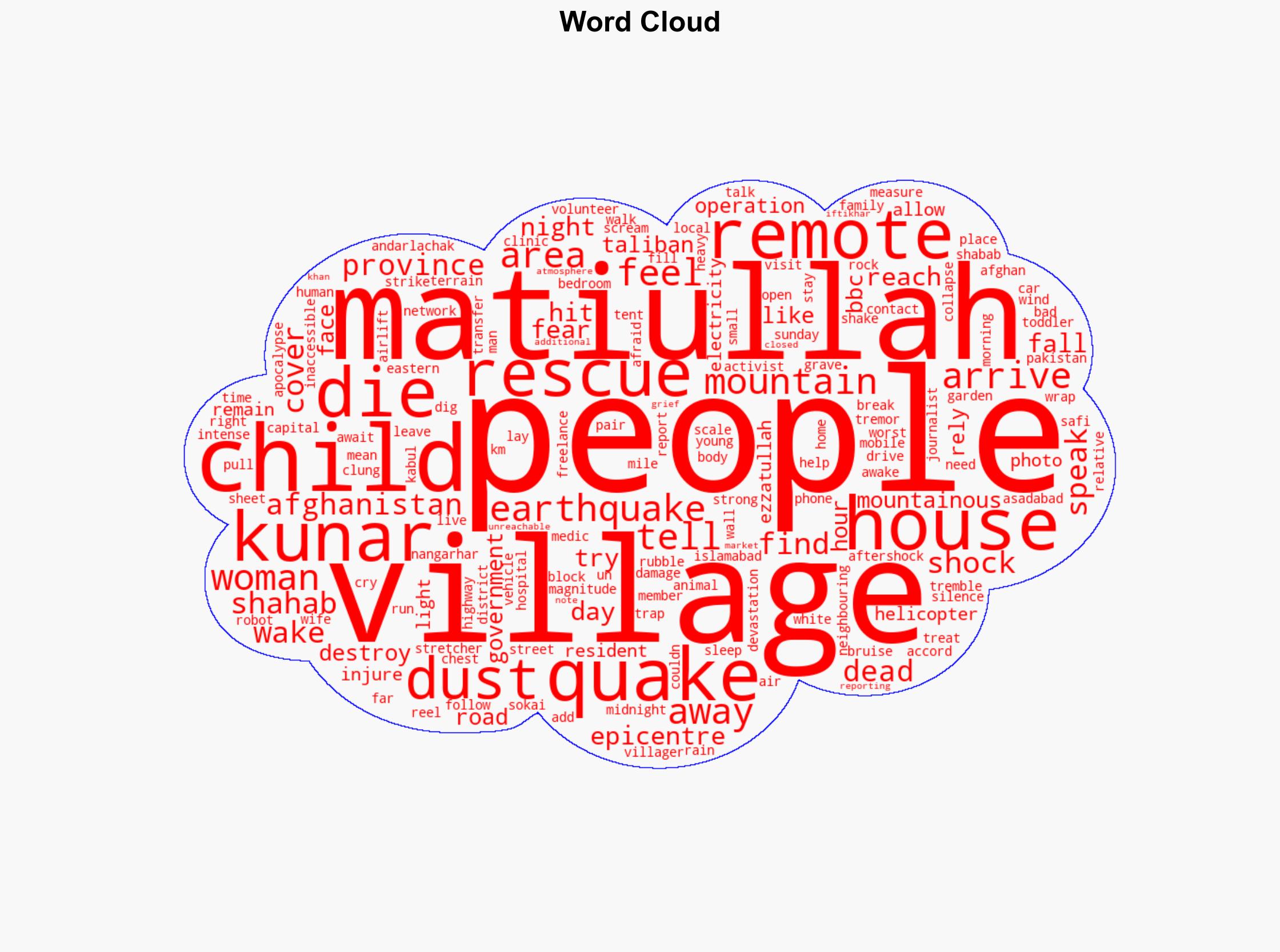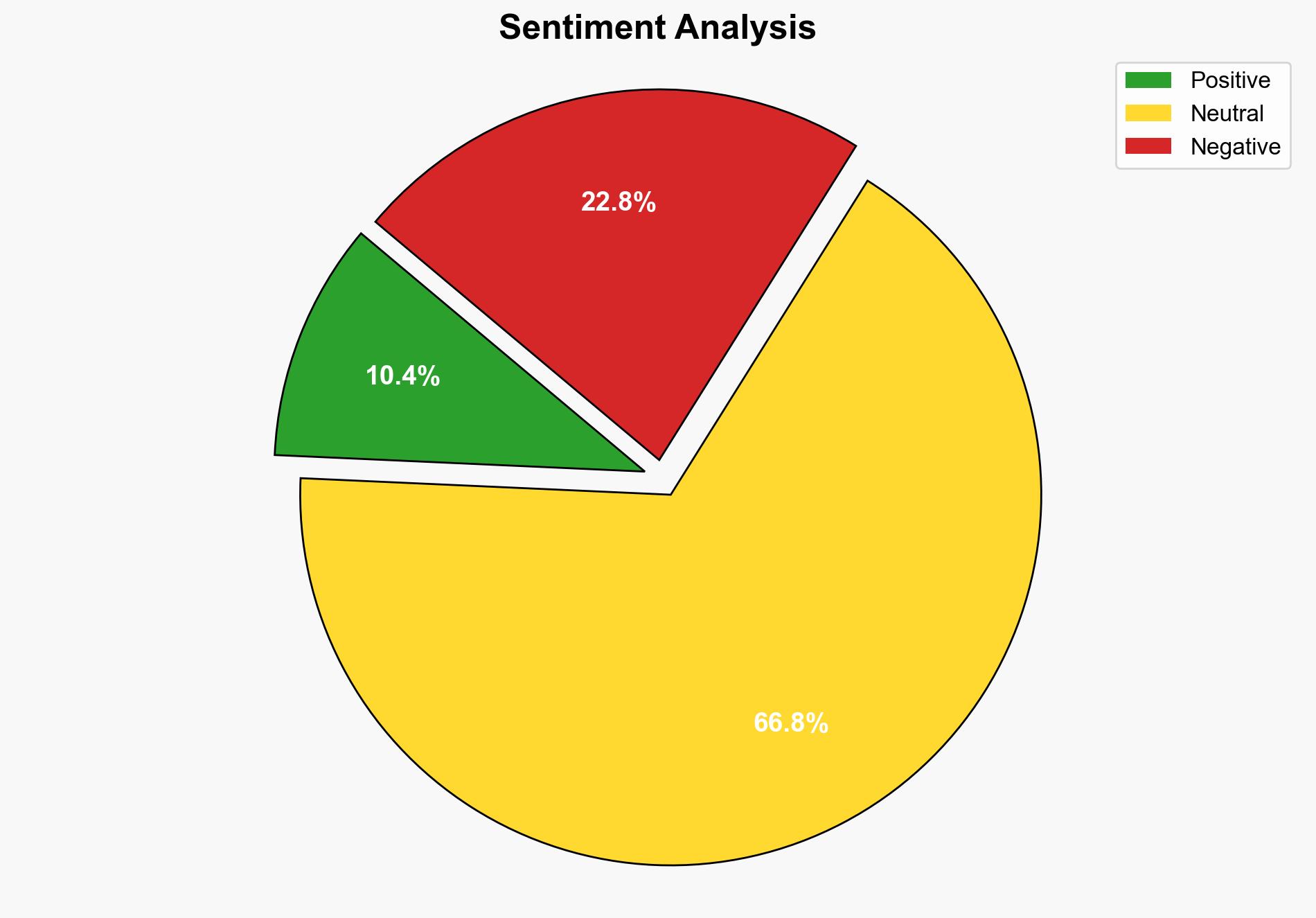‘Covered in dust and too shocked to speak’ Daylight reveals scale of Afghanistan quake’s devastation – BBC News
Published on: 2025-09-01
Intelligence Report: ‘Covered in dust and too shocked to speak’ Daylight reveals scale of Afghanistan quake’s devastation – BBC News
1. BLUF (Bottom Line Up Front)
The situation in Afghanistan following the earthquake is dire, with significant humanitarian needs and logistical challenges. The most supported hypothesis is that the earthquake will exacerbate existing vulnerabilities in the region, potentially leading to increased instability. Confidence level: Moderate. Recommended action: Prioritize international humanitarian assistance and infrastructure support to mitigate further destabilization.
2. Competing Hypotheses
1. **Hypothesis A**: The earthquake will primarily result in localized humanitarian crises, with limited broader geopolitical impact. The focus will be on immediate relief efforts and reconstruction within affected areas.
2. **Hypothesis B**: The earthquake will exacerbate existing socio-political and economic vulnerabilities in Afghanistan, potentially leading to increased instability and regional security concerns.
Using ACH 2.0, Hypothesis B is better supported due to the ongoing challenges in Afghanistan, including governance issues, economic instability, and security threats. The earthquake’s impact on infrastructure and displacement could further strain resources and governance.
3. Key Assumptions and Red Flags
– **Assumptions**: The Afghan government and international community will respond effectively to the crisis. The earthquake’s impact is limited to physical destruction without cascading effects on governance or security.
– **Red Flags**: Limited access to remote areas may hinder accurate damage assessment. Potential for underreporting of casualties and needs. The Taliban’s control over information and access could obscure the true scale of the disaster.
4. Implications and Strategic Risks
The earthquake could lead to increased displacement, straining already limited resources and potentially exacerbating tensions between local populations and governing authorities. The disruption of infrastructure and communication networks may hinder relief efforts and economic recovery, increasing the risk of social unrest. Additionally, the Taliban’s control over affected areas could complicate international aid delivery and coordination.
5. Recommendations and Outlook
- Coordinate with international organizations to provide immediate humanitarian aid and long-term infrastructure support.
- Monitor the situation for signs of increased instability or security threats.
- Scenario-based projections:
- Best: Effective international aid mitigates the humanitarian crisis, stabilizing the region.
- Worst: Prolonged instability and inadequate response lead to increased regional insecurity.
- Most Likely: Continued challenges in relief efforts with moderate impact on regional stability.
6. Key Individuals and Entities
– Matiullah Shahab
– Ezzatullah Safi
7. Thematic Tags
national security threats, humanitarian crisis, regional stability, disaster response





